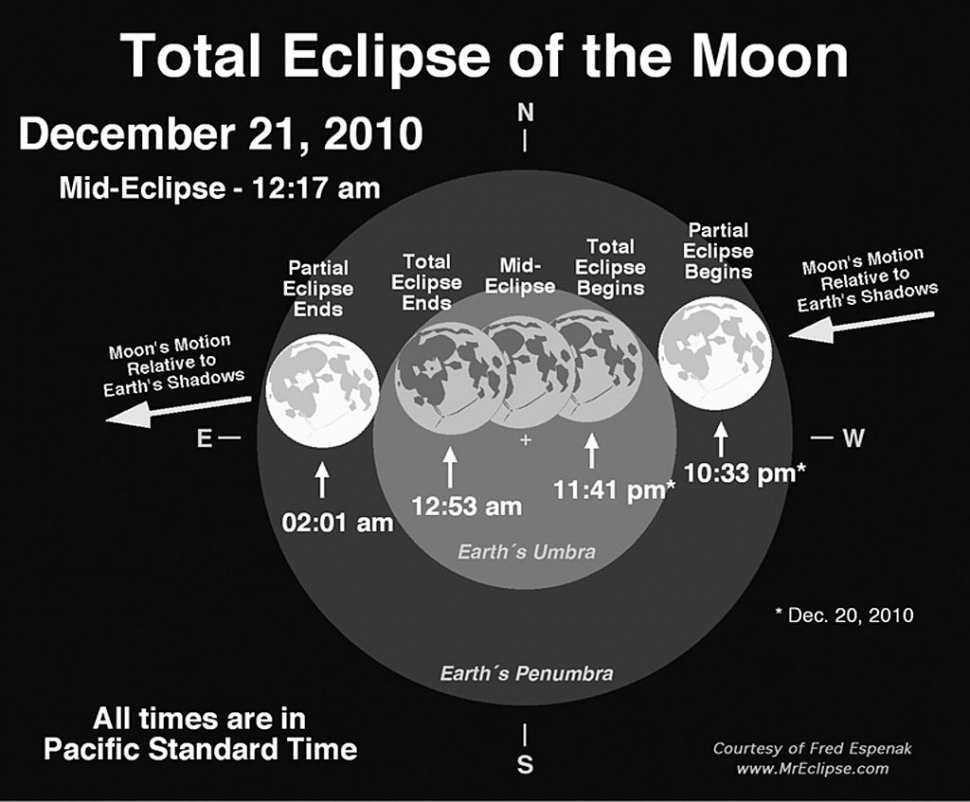|
Total Eclipse of the Moon
 By Carmelita Miranda — Wednesday, December 15th, 2010
Night Sky Over Fillmore
Monday night December 20th to early hours of December 21st will be a Total Lunar Eclipse. Penumbral Eclipse Begins: 9:29 PM This Total Lunar Eclipse is well placed with the maximum amount of earth’s shadow coverage just off the coast of Baja California. This could be an excellent opportunity for budding astronomers and students to test their observing skills. Try recording your estimates of the Moon's brightness every ten minutes during totality using the Danjon Scale. The French astronomer A. Danjon proposed a useful five point scale for evaluating the visual appearance and brightness of the Moon during total lunar eclipses. 'L' values for various luminosities are defined as follows: L = 0 Very dark eclipse. The assignment of an 'L' value to lunar eclipses is best done with the naked eye, binoculars or a small telescope near the time of mid-totality. It's also useful to examine the Moon's appearance just after the beginning and before the end of totality. During the eclipse, the Moon will be in eastern Taurus near the border with Gemini. The bright red star Aldebaran ("Eye of the Bull") lies 20 degrees west of the Moon. The winter constellations Gemini, Auriga, Taurus and Orion surround the eclipsed Moon. Past observations I have had of a Total Lunar Eclipse, the Moon looks like a 3-dimensional “peach” in the night sky. Photographing a lunar eclipse presents challenges to getting the right exposure from the partial phases, with bright white crescents to the dark ruby red colors during totality. Your best bet is to use an ISO setting of 400 and vary exposure times. Just watching a Total Lunar Eclipse, especially during totality, is a beautiful and wonderful experience. Let’s hope for good weather and clear skies, bundle up and grab a lounge chair and enjoy the show. |
